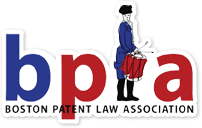
Full EPX Set
Control Set
Single EPX Set
Multiple EPX Set
Median forward citation count
16
42
41
70
Median forward citations per year since the earliest priority date
0.72
1.77
1.74
2.84
3.73
Median ratio of forward patent citations to backward patent citations
3.67
5.24
1.88
Order of most frequent current primary CPC sections
G>A>H>B>C
G>A>H>B>C
G>A>H>B>C
H>G>A>B>C
Sample size
9446
9521
8959
562
Ex Parte Reexamination as a Valuable Option for Challenging Patent Claims
October 2016 -
By
Ilker Donmez
, Ph.D. and Mike McGurk
, DLA Piper

Compared to citation of prior art, requesting an EPX not only can get the United States Patent and Trademark Office (PTO) to actually force the patent owner to re-prosecute the claims, but it also may effectively allow the requestor to draft the PTO’s rejections,
because an examiner is likely to copy any well-drafted arguments into the PTO-issued rejection
.
Compared to IPRs, EPXs tend to be substantially cheaper
—often by orders of magnitude2. Additionally, unlike an IPR petitioner, an EPX requestor can remain anonymous
, and need not worry as much about creating estoppel for other challenges should the EPX not succeed
. Moreover, an EPX may be available when an IPR is not, for example when the third party has already sought a declaratory judgement challenging a claim’s validity, or when more than a year has passed since the third party has been served with an infringement complaint
.
In an EPX, unlike in a court proceeding, claims are given their broadest reasonable interpretation
and are examined without a presumption of validity
. Furthermore, court decisions are not necessarily binding on EPX outcomes
. For instance, after a court finds claims not invalid, even if final, the PTO may still find the claims unpatentable in EPX
. Therefore, an EPX can be an attractive option not only before pursuing other avenues, but also after litigation.
Given the advantages of EPX, it is surprising that the annual number of requests has remained so low. Nevertheless, those parties that do resort to an EPX seem to challenge patents that are valuable, which parallels a similar correlation found for litigated patents.3 As an example, we calculated various forward citation metrics, which are assumed to be indicative of patent value,4 and compared them across patents that were not subject to EPX, those that received only one EPX request, those that received at least one EPX request, and those that received two or more EPX requests. As the following table shows, patents receiving at least one EPX request seemed to be more valuable than those with no such requests, and patents receiving more than one EPX request seemed to be more valuable than those with a single EPX request. Overall, these statistics support the argument that third parties who are considering a trial-type challenge to a patent should consider EPX, at least as a preliminary step for weakening the claims,5 similarly attractive.
Table – Statistics for patents receiving EPX requests6


Admittedly, EPXs have disadvantages too. For example,
a requestor cannot participate in the EPX after filing the request in the absence of a subsequent patent owner statement
, while the patent owner can present arguments as well as freely amend the claims.7 A second disadvantage is that only patents and printed publications can be cited, and only on novelty and non-obviousness grounds
.8 These limitations on prior art, although restrictive, are not different from those in an IPR
.
A third and particularly limiting disadvantage of EPXs is that a filed request cannot be withdrawn or abandoned
. For third parties who would consider or desire settling, an IPR would in general be more favorable in that respect. Potentially there is an avenue for getting a filed EPX request stricken before it being granted or denied, namely filing a defective request, such as one without a fee
, or a certificate of service. However, such an approach is not recommended because it would at best be a limited avenue for negotiation if properly timed prior to filing to assure resolution before denial or grant. Moreover, the request would likely end up in the record as a citation of prior art
, possibly resulting in the patent owner being less likely to settle on favorable terms. Further potential disadvantages include a delay in the EPX proceeding if the PTO determines to stay the matter due to a pending Patent Trial and Appeal Board Review Proceeding
, and a protraction of the EPX proceeding if the prosecution is reopened multiple times
.
Despite these drawbacks, an EPX should be considered a useful tool more often than it has been. Besides allowing the requestor to remain anonymous and to initiate the process with limited funds, because the patent owner is not allowed to enlarge the scope of the challenged claims in EPX
, the requestor is not taking a substantial risk if the challenge does not succeed.
In addition, procedural rules imposed on EPXs constrain what a patent owner can do. For example, the rules do not allow the patent owner to file a Request for Continued Examination or to file a continuing application
. The rules also provide for more limited extensions of time as compared to regular prosecution
. The provisions for panel review
at each stage of an EPX are further likely to attenuate any disadvantage to the non-participating third party.
Certain, less well-known features of an EPX make it even more favorable to a requestor. For example, the rules allow for reliance on previously considered art, even as the sole reference
. The rules also permit filing multiple EPX requests.9 In addition, requestors have some participation rights that make EPX challenges more forceful
. While novelty and non-obviousness are the main permissible grounds for challenging claims in an EPX, an examiner may raise other bases, such as written description and enablement, if the patent owner amends the claims or adds new ones
. Furthermore, in some rare situations, it may be possible to have the claims examined under a different patent law regime
. Finally, even though an EPX does not create estoppel for the requestor, it might create prosecution history estoppel for the patent owner.10
Therefore, despite its low utilization statistics, an EPX is a valuable option for challenging claims. As described, a combination of low costs, lack of estoppel, lack of a claim broadening, anonymous filing, broadest reasonable interpretation of claim terms, and limitations on patent owner actions make it an attractive tool.Third parties who discover a prior art patent or publication that destroys novelty or non-obviousness of a target patent’s claims have a number of options. Their main four options are to
cite the reference to the PTO
, request an
(EPX), ex parte
reexaminationpetition for an
(IPR), and/or rely on litigation.1 Requesting an inter partes
reviewex parte
reexamination has certain advantages that are likely overlooked in view of the fact that the number of requests per year has consistently remained in triple digits
, while the number of petitions per year for the significantly more expensive IPR have typically reached four digits
.- Other, more circumstance-dependent options include post-grant review (PGR) for patents subject to first-inventor-to-file provisions of the America Invents Act, if filed within nine months of patent grant, and if relying on any ground that can be raised under35 U.S.C. § 282(b)(2) or (3),37 C.F.R. § 42.204; andTransitional Program for Covered Business Method (TPCBM) Patents, currently available for accused infringers of a claim reciting “a method or corresponding apparatus for performing data processing or other operations used in the practice, administration, or management of a financial product or service, except that the term does not include patents for technological inventions.”
- SeeAIPLA, Report of the Economic Survey 29, 38 (2015)(providing median cost of $12,000 for an EPX in 2014, compared to median cost of $275,000 for an IPR through Patent Trial and Appeal Board hearing in 2015.
- John R. Allison et. al., Valuable Patents, 92 Geo. L.J. 435, 440 (2004).
- Id.
- Because the claims are reexamined, during which the patent owner may amend the claims as well as make arguments, the claims may be weakened both by being made narrower themselves and by being subject to prosecution history estoppel.
- We obtained a list of patents that were subject to EPX requestsfrom the PTO, eliminated non-EPX certificates and duplicates, preserving only a single instance for each patent that reflected the highest number of EPX requests received, and then created the control list by incrementing each patent number by one and eliminating any patents with invalid parameters, as well as those that were duplicative of any other patents. We obtained the citation and class metrics for this data, considering only the highest available parameter for each unique application, viaThomson Innovation.
- In contrast, a patent owner is allowed only one motion to amend during an IPR, in which the patent owner may seek to cancel a challenged claim or substitute a reasonable number of claims for each challenged claim (a request that seems to be granted infrequently).
- See alsoMPEP § 2258(explaining double patenting rejections are also permissible).
- E.g.,U.S. Patent No. 5,684,863has received six EPX requests.
- See supranote 3.


Index
Community Calendar
Read more >
Table of Contents
President's Message by Erik Belt
Read more >
BPLA Submitted
Amicus
Brief in Design Case of the Century
Read more >
< Back
Message from the Editor-in-Chief
Read more >
The Defend Trade Secrets Act: Examining the DTSA’s Language, Use, and Future
Read more >
BPLA's ANNUAL MEETNG AND LUNCHEON
Read more >
RESTORING THE PATENT SYSTEM: Countering Supreme Court Attacks on What Can Be Patented
Read more >
IPR Motions to Amend: Rays of Hope for Patent Owners Despite Gloomy Statistics
Read more >
Nominations for the BPLA Officers and Board of Governors for 2016-2017
Read more >
In re Aqua Products
: Claim Amendments During Inter Partes
ReviewRead more >
Proposed Membership By-Law Change
Read more >
The 2016
Invented Here!
EventRead more >
2015 BPLA Annual Meeting Minutes
Read more >
Ex Parte
Reexamination as a Valuable Option for Challenging Patent ClaimsRead more >
PTAB Bar Asssociation
Read more >
McRO v. Bandai
: Latest Federal Circuit § 101 Decision Breathes New Life into Software PatentsRead more >
Members on the Move
Read more >







